Mallorca is known as one of Europe’s busiest summer playgrounds, but away from the beach clubs and fancy yachts, there’s another side to this Mediterranean beauty.
With a renewed push towards sustainable tourism, we discovered what that means for this island paradise.
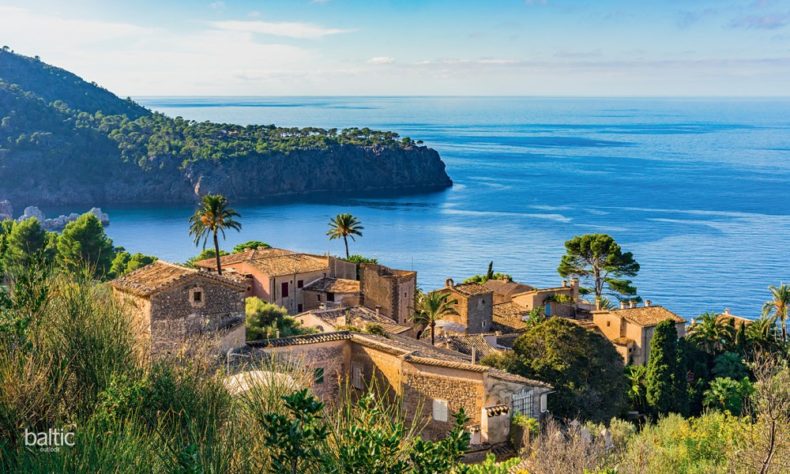
Sustainable transport
Around April, the Palma de Mallorca airport starts filling up with oversized cardboard boxes wielded by thick-calved cyclists.
Cycling has become a mainstay on Mallorca, with the cooler weather and fewer crowds in spring and autumn attracting cyclists from around the world.
Many hotels offer dedicated cycling packages, expansive bike storage rooms, and spas to loosen up tight muscles at the end of a long day on the saddle.
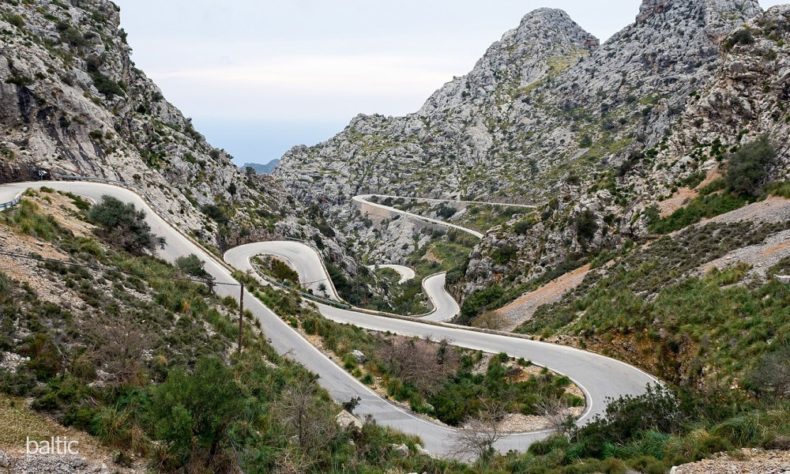
Many are drawn here by the beast that is Sa Calobra. Nicknamed ‘the snake’, this infamous road designed by Spanish engineer Antonio Parietti in the 1930s has over 50 tight hairpin bends, a silky smooth road surface, and incredible views, making it a bucket-list ride for hardcore cyclists who love a challenge.
Even if you prefer a more relaxed bike ride, exploring the island on two wheels is a great way to get around like a local. In Palma, the cycle lane on the promenade straddling Palma Bay is perfect for a leisurely cruise.
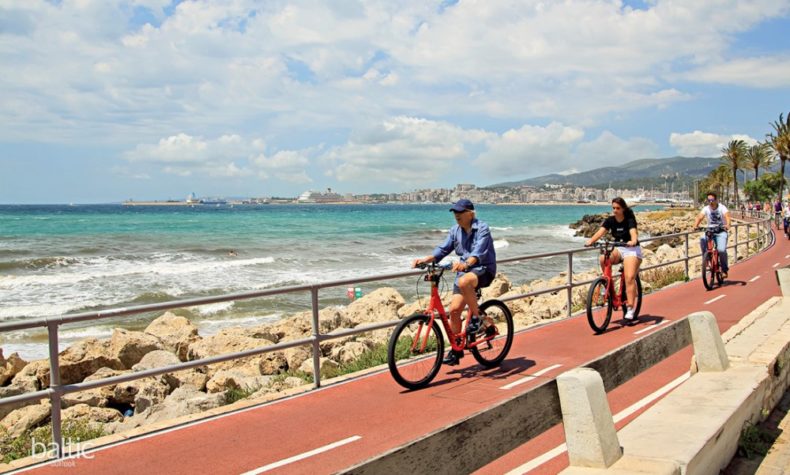
Rent a bicycle at one of the many small bike shops along Avenida Gabriel de Roca, then pick a direction.
Heading westwards towards Magaluf takes you along the posh coves of Portals Nous and Cala Nova with plenty of sidewalk cafés to grab a coffee or ice cream along the way. This ride is fairly flat with just a few small hills to get the legs pumping. Most of the ride is almost entirely bike path, with only small sections on the road.
Scenic hiking
The most iconic hiking route in Mallorca, the Ruta de Pedra en Sec, or ‘dry stone route’, consists of 168 kilometres of signposted trails along the island’s craggy western coast.
The route follows old cobbled paths originally built to link the villages and estates dotted throughout the UNESCO World Heritage Site-listed Serra de Tramuntana mountain range.
The sustainable tourism tax has enabled the restoration of many of the stonewall terraces and paths as well as the setting up of new signage along the route.
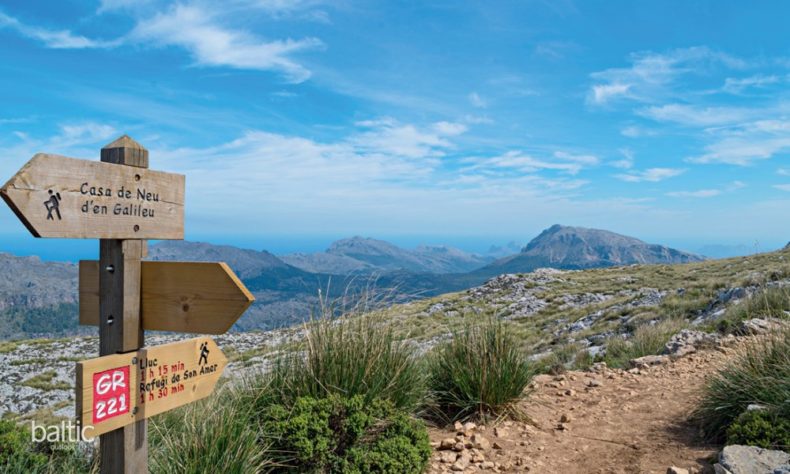
Restorers are following the traditional stone-wall technique employed by highly skilled craftsmen for centuries. Every stone is carefully selected according to size and shape, and the small spaces between the stones allow rainwater to run through the gaps. Such stone walls can be seen on footpaths, roads, walls, and terraces for agricultural land and canals for mountain streams.
In fact, there are around 20,000 kilometres of dry-stone walls in the Serra de Tramuntana area alone.
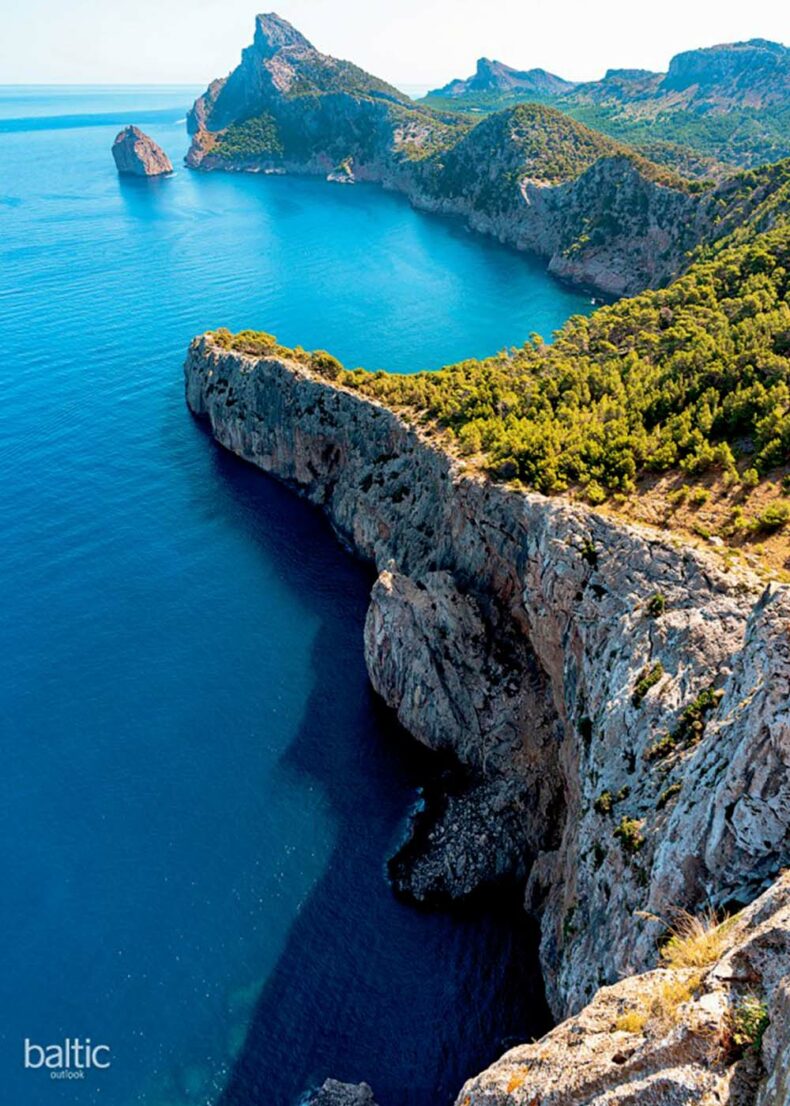
Hiking here is more scenic than strenuous, with a never-ending vista of breathtaking views of the rugged coastline and tiny coves to one side, and olive groves, pine forests, and expansive estates on the other.
If you’re pressed for time, a day hike along the section between the Can Boi and Muleta refuges is a great option.
This roughly ten-kilometre route takes you through the charming town of Deià to the former telegraph station of Muleta, which reveals impressive views over the bay of Port de Sóller.
Keep walking down to the port for a lunch break or paddle in the deep, circular bay.
From there, you can hop aboard the vintage tram that runs between the beach and the timeless town of Sóller to round out the excursion.
Wine and dine

Mallorca boasts some of Spain’s best wines, many of which you’ve probably never tried because few of them are exported. Instead, you’ll need to make the journey to the island to sample a drop from any of the 33 local cellars.
Wine was traditionally a big business in Mallorca until the appearance of the vine-eating phylloxera louse and resulting disease in the late 19th century, which caused havoc on the island’s wine production.
As agriculture gave way to tourism, winemaking took a back seat. Seventy-five thousand acres of vines covered the island in 1891.
Today, that figure sits at around 2500 acres, and the rising price of land makes it seem unlikely that number will rise. But this tight-knit industry is experiencing a revival thanks to new organic methods and a renewed focus on producing local wines using native grape varieties.

The majority of the 2500 acres lie in the foothills of the Serra de Tramuntana, in two denominations of origin: Binissalem and Pla i Llevant.
An easy hour’s drive north from Palma through dusty old villages, olive groves, and medieval monasteries and you’ll quickly forget you’re on an island.
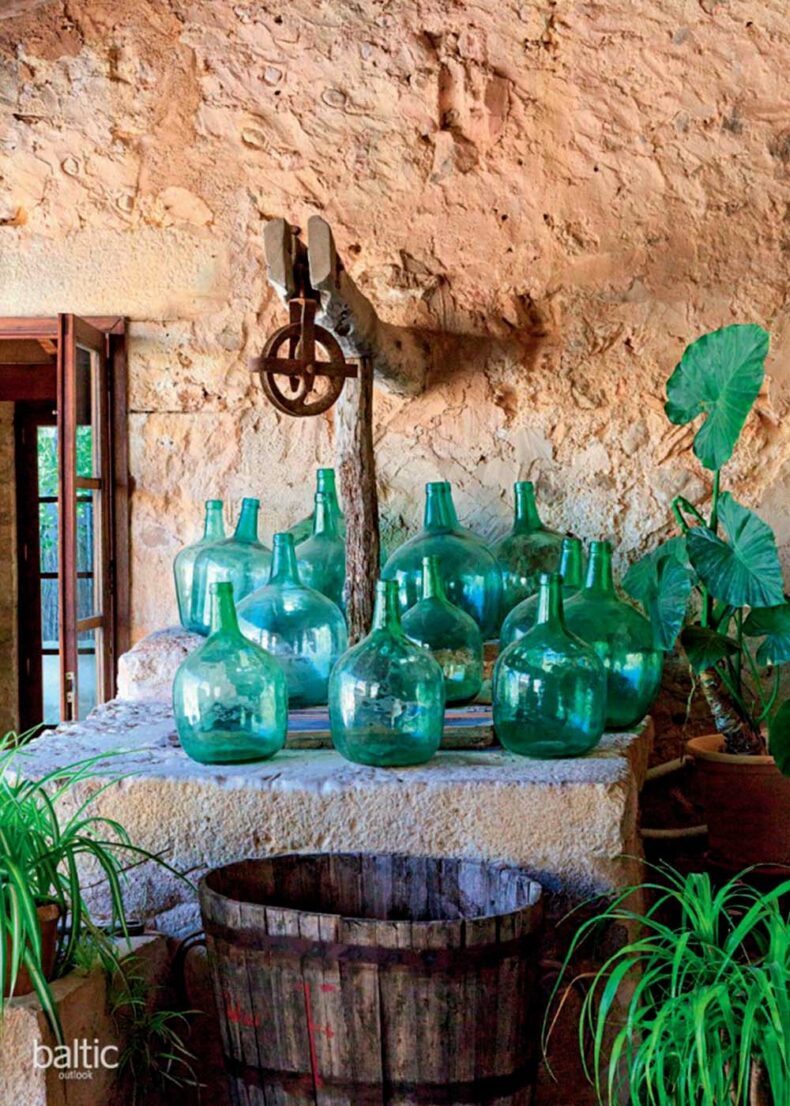
A good place to start is at Bodegues Ribas in Consell. Mallorca’s oldest wine estate has been owned and run by the Ribas family for over 300 years.
Sticklers for tradition, the family still handpicks all their grapes to ensure the highest quality. They also take pride in recovering native grape varieties from the island, such as Gargollasa, a red variety that was practically extinguished but is now used to complement other more popular varieties.
While you sip on the rich, elegant reds and velvety, creamy whites, take a look at the impressive 18th-century Ribas home, which has been lovingly preserved, along with its original barrel cellar and winemaking warehouse.
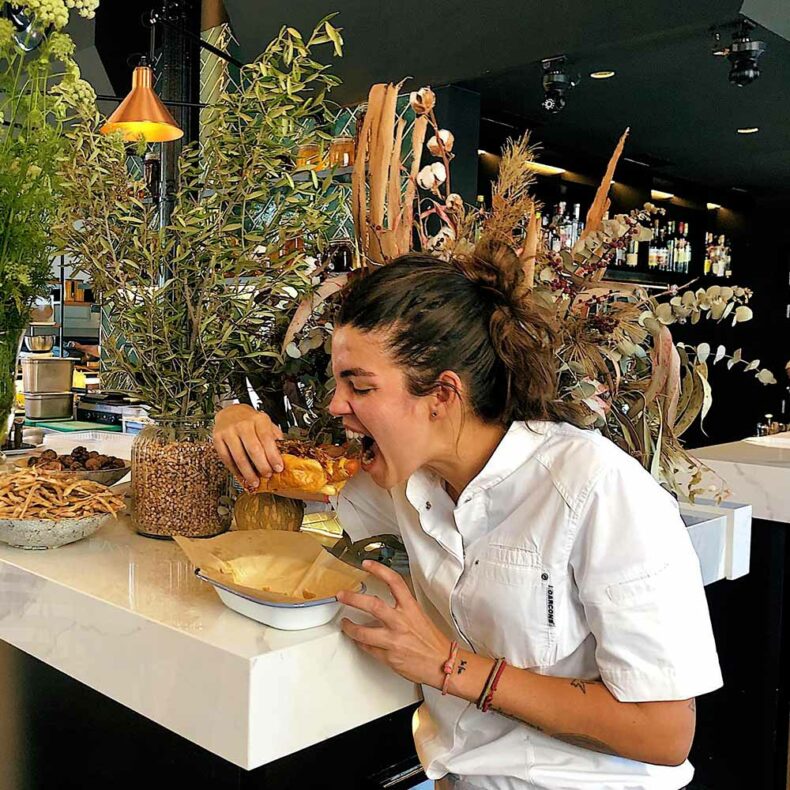
Photo on Instagram
Back in Palma, the Andana restaurant, housed in what was Mallorca’s original railway station, is another champion of the 0 km concept.
The oneyear-old establishment has already drawn a loyal following thanks to its seasonal menu using local ingredients from Michelin-starred chef Maca de Castro’s own garden and a wine list celebrating local wines.
Don’t leave without trying a Mallorcan coca – a crispy olive oil flatbread topped with seasonal vegetables.
The Portera squid, spice-infused whole cauliflower head, and tahini-drizzled eggplant are also sure to impress.
A table on the warm terrace is the perfect place to slow down away from the hurried shoppers and busy streets of the nearby Old Town.
Hidden beaches
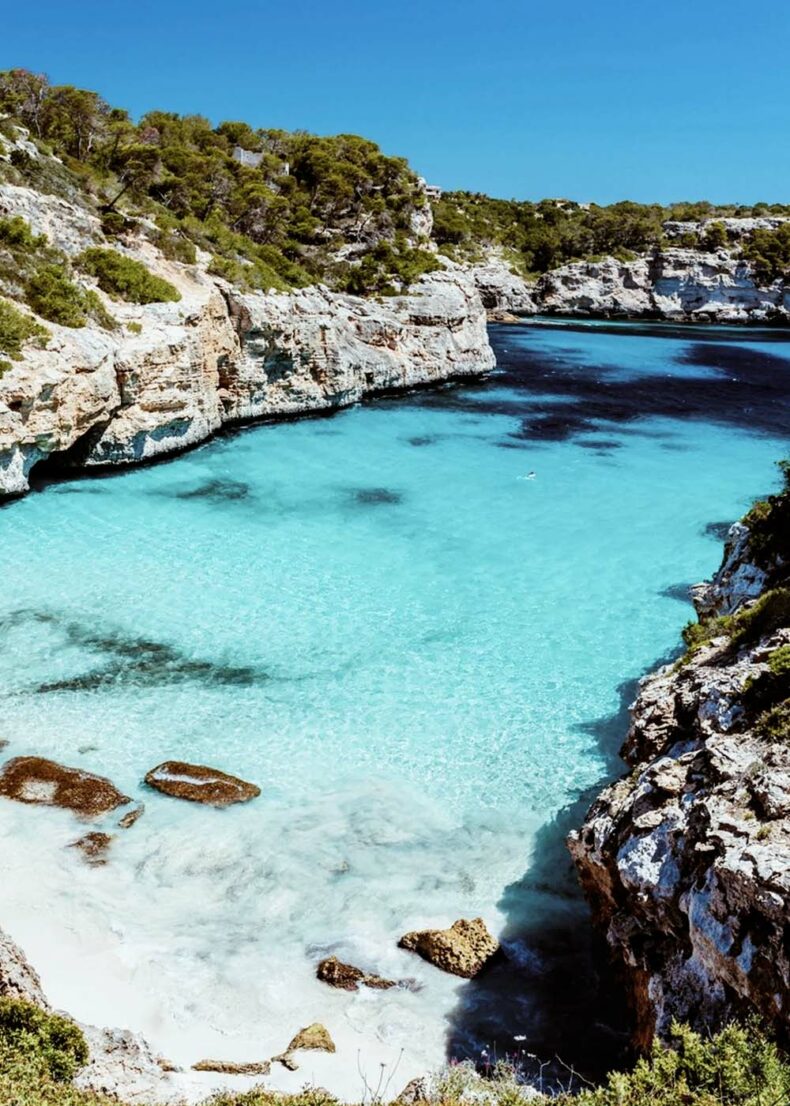
Photo on Unsplash
If you dream of escaping the crowds, whiling away the day with a good book, the sun warming your face and clear blue water to cool off in, head to Mallorca’s wild coast.
Nestled behind the village of Llucalcari is the secluded little bay of Es Canyaret. Here you can enjoy a swim in the tiny pebbly cove or paddle in the shallow rock pools.
The bay even has a small mud fountain that appears after heavy rain, so scrub away your stress and then dive into the crystal blue sea.
The hike in is an adventure in itself. Start at Deià and follow the coast until you see the handmade wooden playa sign tacked to a tree. Your effort will be rewarded with your very own slice of untouched Mallorca to call your own for the day.

Further along the coast is one of the most secluded spots on the island. The beach of Sa Calobra sits at the mouth of the Torrent de Pareis canyon.
There are only two ways in: by road or sea. If you choose to visit by road, you’ll battle 50 hairpin bends, tour buses, cyclists, and narrow passageways down the steep mountain road towards the bay. Alternatively, a much easier and less stomach-churning arrival is on board a boat tour from Sóller.
Either way, upon arriving you’ll be greeted by the brightest and clearest turquoise water you’ve ever seen as well as sandy beaches free of umbrellas and kiosks.
The stunning surrounds are made even more remarkable with the backdrop of the canyon gorge disappearing behind the beach. This is the place to explore if you want a unique beach day without the crowds.
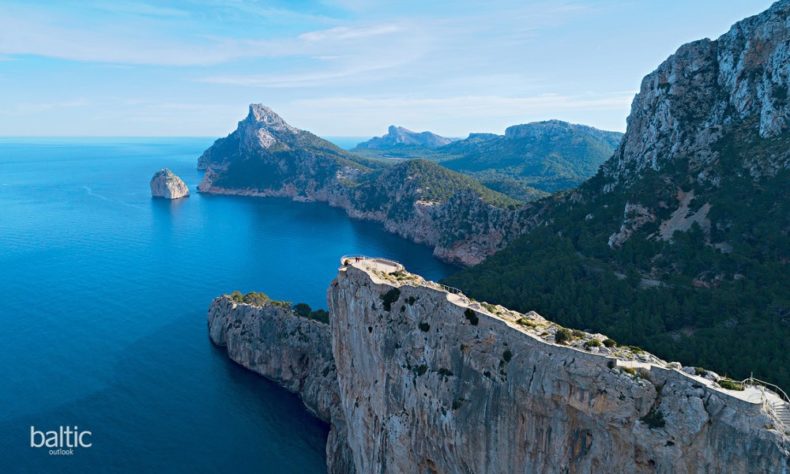
Where the Mediterranean meets the mountains in the north is Cap de Formentor.
Known locally as the meeting point of the four winds, this slim peninsula feels gusts from the Spanish mainland, the European Alps, North Africa, and the Atlantic Ocean.
These harsh conditions have left a lasting impression on the rock and cliff faces, offering some of the most dramatic scenery on the island and creating appealing nesting places for seabirds in the craggy rocks.
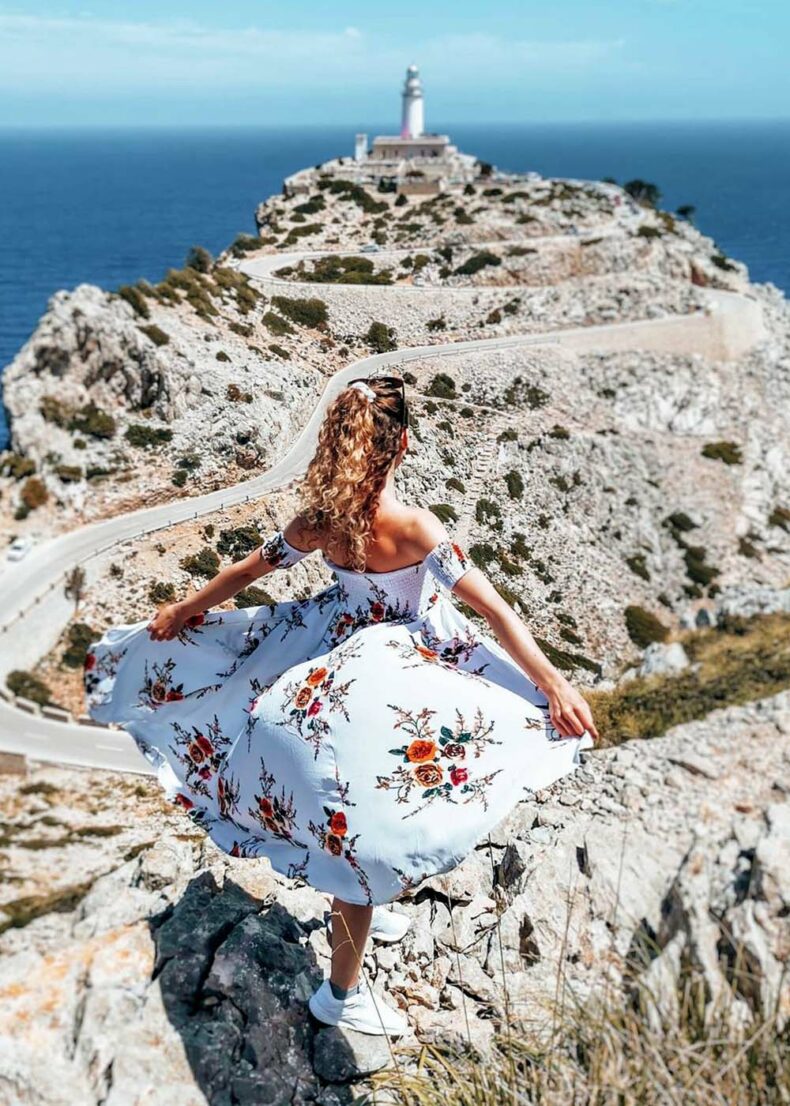
Photo on Instagram
It also offers one of the best sunset vantage points on the entire island, drawing lovers and families keen to imprint the colourful ombré sky in their memory forever.
Perched at the furthermost point and 210 metres above sea level, the Cap de Formentor lighthouse is a cosy spot to pull up a pew for nature’s show.
The road in – another infamous journey from the father of hairpin bends Mr. Parietti – can get extremely busy in the summer months, so opt to take the bus from Port de Sóller and let the driver earn the EUR 3.10 trip fare.
Read more about Mallorca in Baltic Outlook.